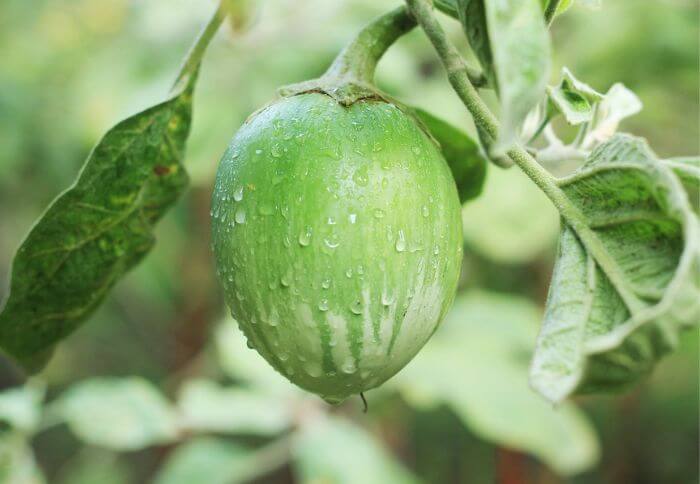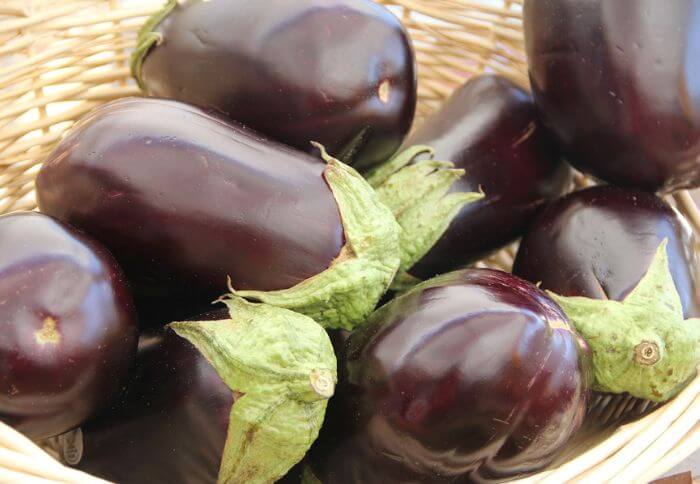Pea eggplants may be tiny in size, but their anatomy is nothing short of fascinating. While they resemble regular eggplants on a smaller scale, these miniature variants have their unique characteristics that set them apart.
One striking feature is their vibrant green hue which covers their smooth yet slightly rough-textured skin. As we delve deeper, we discover the inner workings of pea eggplants – from the delicate white flesh to the multitude of seeds contained within.
The interior of a turkey berry reveals an intricate arrangement of tiny edible seeds enclosed in soft pulp. Interestingly, this pulp has a slightly bitter taste that is complemented by a pleasantly sour undertone.
Another noteworthy aspect lies in the seed distribution: scattered throughout the fruit’s flesh are numerous small black or dark brown seeds that add both texture and depth to dishes. It is these seeds that give turkey berries their characteristic crunch when eaten whole.
While some may overlook these diminutive delights due to their size, understanding the anatomy of turkey berries unveils a world full of culinary possibilities.
Their crisp texture paired with subtle tanginess makes them ideal for stir-fries, curries, or pickling applications. Delving into nature’s creations such as these reminds us that even the smallest packages can deliver big flavors and unforgettable experiences at our dining tables!
The Culinary Versatility of pea eggplants
Roasting and grilling
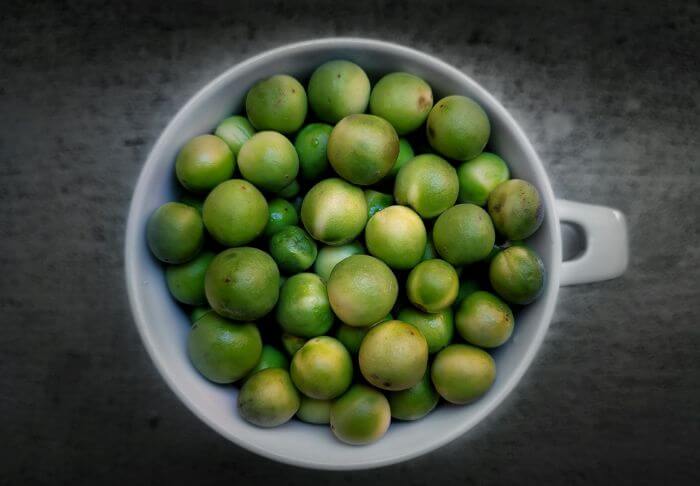
Roasting and grilling are two cooking techniques that can truly elevate the flavors of pea eggplants. While both methods involve high temperatures, they offer distinct results that cater to different taste preferences.
Roasting brings out the natural sweetness and enhances the creamy texture of these little eggplants, making them perfect for dishes like stews or curries. On the other hand, grilling exposes them to direct heat, creating a charred and smoky flavor profile that adds depth to salads or pasta recipes.
The beauty of roasting pea eggplants lies in their ability to absorb other flavors like a sponge. Infused with aromatic herbs and spices, they become a delectable addition to any dish.
Their tender flesh turns irresistibly creamy when roasted at around 400°F (200°C) for about 20-25 minutes, allowing their flavors to deepen while maintaining a tantalizing moistness. The resulting caramelization adds richness not only visually but also on the palate.
Grilling pea eggplants completely transforms them into an entirely new culinary experience altogether. By placing them directly over hot coals or on a grill pan brushed with oil over medium-high heat, these diminutive vegetables attain an intense smokiness comparable to roasted red peppers or grilled zucchini slices.
The slight charring creates a delightful contrast between the crisp exterior and yielding interior, enhancing their inherent tenderness while imparting an enticing smoky aroma that lingers long after each bite.
Whether you choose roasting or grilling as your preferred eggplant cooking method
Roasted
Roasted pea eggplants may not be as well-known as their larger counterparts, but they are definitely worthy of attention. These petite, plump fruits pack a punch when it comes to flavor and texture.
When roasted, the skins of eggplants become crispy and slightly charred, while the tender flesh inside retains its juicy bite. The result is a delightful contrast of textures that will keep your taste buds intrigued with each bite.
One of the unique qualities of roasted pea eggplants is their versatility in cooking. They can be used in a variety of dishes, adding a burst of flavor and color wherever they go.
Toss them into a salad for an added crunch or use them as a delicious topping for pizza or pasta. Their vibrant purple hue also makes them an eye-catching addition to any dish.
Whether you’re using them as a main ingredient or simply garnishing your plate, roasted turkey berries are sure to elevate your culinary experience.
Beyond their culinary attributes, roasted eggplants also offer several health benefits. Like other types of eggplant, they are low in calories and high in fiber, making them an ideal choice for those looking to maintain or lose weight.
Related read: check purple eggplant varieties
Sautéing and frying
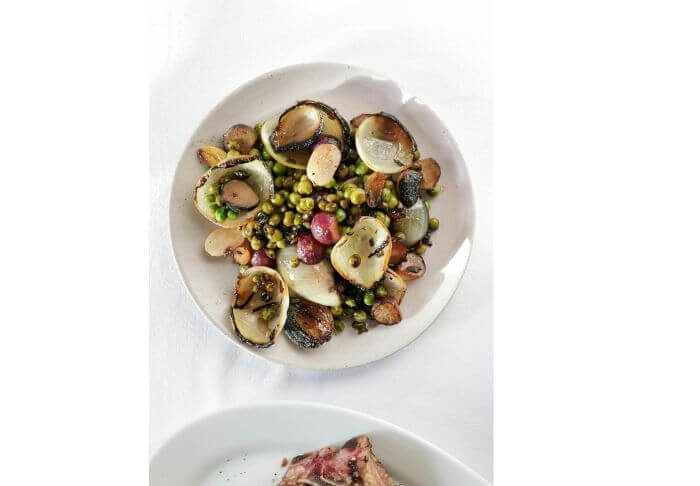
Frying and sautéing are both versatile cooking techniques that can elevate the flavors of pea eggplants to new heights. Frying, with its sizzling hot oil, creates a crispy exterior that locks in the natural sweetness of these tiny gems while adding a delightful crunch.
On the other hand, sautéing allows for a gentle cooking process that preserves the delicate texture of pea eggplants, creating a tender bite that bursts with flavor.
When it comes to frying pea eggplants, there is an art to achieving just the right amount of crispiness without overpowering their inherent taste.
A trick is to lightly coat them in flour or cornstarch before dropping them into the hot oil; this ensures an even outer coating while maintaining their uniquely subtle flavor
In contrast, sautéing brings out the earthy notes within eggplants by gently browning them over medium heat with aromatic herbs and spices. This technique perfectly complements their natural tenderness and allows for easy customization according to one’s palate.
By experimenting with both frying and sautéing methods for cooking eggplants, you can unlock exciting taste experiences that will keep you coming back for more.
Whether you prefer crispness or tenderness, these two techniques offer distinct ways to enjoy this versatile ingredient in various culinary creations beyond traditional recipes.
With each bite, let yourself be transported on a sensory journey where every mouthful unveils new depths of flavor waiting to be discovered within these petite wonders – fry them golden or saute.
Baking and stuffing
Baking and stuffing are two culinary techniques that can elevate the humble pea eggplant to new heights. When it comes to baking turkey berries, the possibilities are endless.
You can bake these small fruits whole, roasting them until they turn soft and tender, or you can mix them into a delicious casserole where their flavors mingle with other ingredients, creating a delightful explosion of taste.
Stuffing, on the other hand, takes this versatile ingredient to another level by allowing you to infuse it with different flavors and textures.
Whether you choose to fill the pea eggplants with a savory mixture of herbs and spices or go for a more indulgent stuffed version using cheese and breadcrumbs, stuffing provides endless possibilities for experimentation in the kitchen.
The process of carefully filling each little fruit brings anticipation as you eagerly await the final result – a burst of flavor that delights your taste buds.
Baking
Looking for exciting ways to enjoy your turkey berry? Look no further than this unique baked pea eggplant recipe. With its distinct flavors and healthy twist, it’s sure to become a new favorite in your kitchen.
The combination of roasted pea eggplants with the richness of baked Parmesan cheese creates a truly irresistible dish. The eggplants themselves are small and hearty, with a slightly bitter taste that pairs perfectly with the tanginess of the Parmesan.
And by baking them, you not only bring out their natural sweetness but also add a delightful caramelized crunch to each bite.
To take this recipe to the next level, try incorporating other ingredients like garlic or fresh herbs such as thyme or rosemary. These additions will add layers of complexity to the overall flavor profile and enhance its aromatic qualities.
Serve these baked pea eggplants as an appetizer at your next dinner party or incorporate them into a main course alongside grilled chicken or fish for a deliciously balanced meal.
Whichever way you choose to enjoy them, this recipe is guaranteed to elevate your culinary repertoire and impress even the most discerning palate.
FAQs
Tips to growing pea eggplants in the US
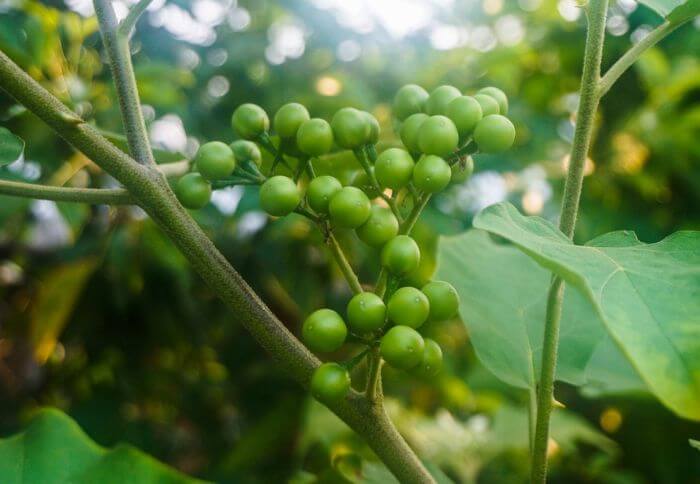
To successfully grow pea eggplants in the United States, there are a few key tips to keep in mind. Firstly, it’s important to choose the right variety for your region. Opt for varieties that are well-suited to your climate and have a shorter growing season, as this will increase the chances of a successful harvest.
Another vital aspect is providing adequate support for these plants. Pea eggplants tend to be vining plants that appreciate some kind of trellis or stake system. This not only helps with airflow and light penetration but also prevents the fruit from touching the ground, reducing the risk of rot or pest damage.
Moreover, regular pruning and maintenance should not be overlooked when growing turkey berries.
It is essential to regularly remove any dead or damaged parts of the plant to promote healthy growth and prevent diseases from spreading. Additionally, make sure to stay on top of watering needs – pea eggplants prefer consistent moisture without being waterlogged.
When to buy
One of the joys of cooking with fresh ingredients is the ability to take advantage of seasonal produce. And when it comes to turkey berrie, timing is everything.
These tiny, vibrant green fruits are a staple in many Southeast Asian cuisines, adding a burst of flavor and texture to a variety of dishes. But when should you look for them at your local farmer’s market or grocery store?
Keep an eye out during the late spring and summer months, as this is when pea eggplants are typically at their peak freshness.
While it might be tempting to reach for imported or frozen eggplants during the off-season, there really is no substitute for enjoying them when they are freshly harvested.
The flavors are more pronounced and nuanced, with a delightful crunch that perfectly complements their subtle bitterness. Plus, supporting local farmers by purchasing in-season produce not only benefits your taste buds but also helps sustain regional farming communities.
What does pea eggplant taste like?
Pea eggplants have a flavor profile that is best described as a combination of tangy, bitter, and slightly sweet. The skin is thin but has a slight bitterness that adds depth to its overall taste.
Once you bite into the soft flesh, you’ll experience a burst of tanginess which some people compare to tomatoes or citrus fruits. The seeds inside add an interesting texture and nuttiness to each bite.
While the turkey berry may not be everyone’s cup of tea due to its slightly bitter notes, it truly shines when incorporated into various dishes like curries and stir-fries.
Its complex flavor adds layers of interest and enhances the overall dining experience. Whether you sauté them with spices or cook them until tender in a rich coconut curry sauce, these little gems will leave your taste buds intrigued and craving for more adventurous culinary journeys!
How do you take the bitterness out of pea eggplant
One common complaint about pea eggplants is their inherent bitterness. While some may enjoy this slightly sharp flavor, others find it off-putting and overpowering.
Fortunately, there are a few simple tricks you can employ to tame the bitterness and unlock the true deliciousness of these petite vegetables.
Firstly, soaking the turkey berries in saltwater before cooking can help to draw out some of the bitter compounds.
To do this, rinse the vegetables thoroughly and then place them in a bowl with water and a generous pinch of salt. Allow them to soak for at least 30 minutes before draining and rinsing again. This technique not only helps reduce bitterness but also enhances the overall flavor.
Another approach is to balance out the bitterness with sweetness or acidity. Adding ingredients like sugar or honey when cooking the pea eggplants can counteract their sharpness and create a more harmonious taste profile.
Similarly, incorporating acidic elements such as lemon juice or vinegar can help cut through the bitterness while adding brightness and complexity to your dish.
sources;
